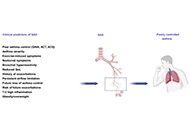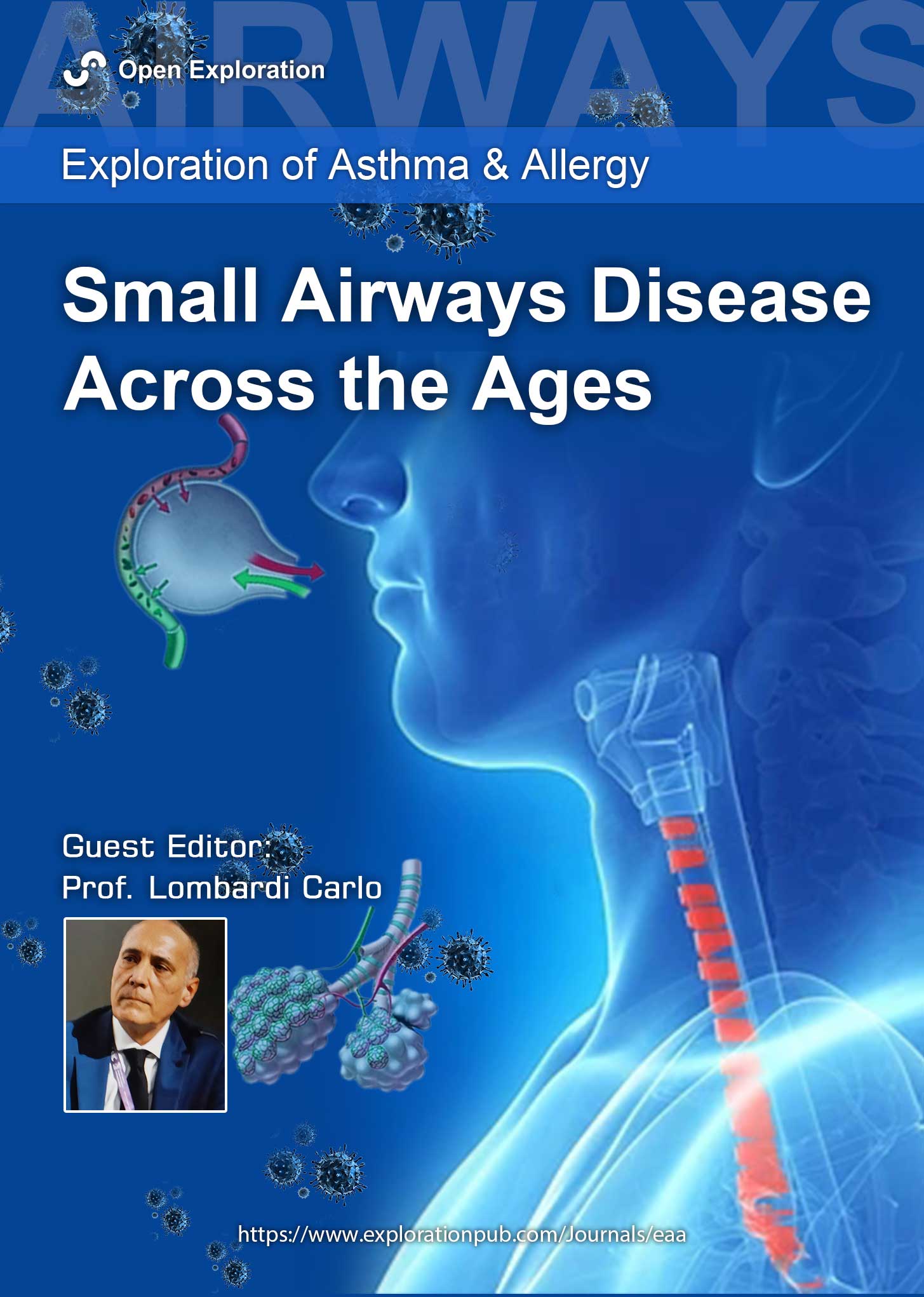-
Guest Editor
Prof. Lombardi Carlo E-Mail
Head of Departmental Unit of Allergology, Clinical Immunology & Pneumology, Fondazione Poliambulanza Istituto Ospedaliero, Brescia, Italy
Research Keywords: Asthma, allergy, COPD, biological agents, specific allergen immunotherapy
About the Special Issue
Asthma is a chronic disease, affecting approximately 350 million people worldwide. Inflammation and remodeling in asthma involve the large airways, and it is now widely accepted that the small airways (those with an internal diameter <2 mm) are involved in the pathogenesis of asthma and are the major determinant of airflow obstruction in this disease. From a clinical perspective, small airways dysfunction (SAD) is associated with more severe bronchial hyperresponsiveness, worse asthma control and more exacerbations. Unlike the GOLD guidelines which, in their definition, identify COPD as a disease of the small airways, the Global Initiative for Asthma (GINA) guidelines do not refer to the prevalence and role of SAD in asthmatic patients. This decision seems surprising, given the growing body of compelling evidence accumulating pointing out the high prevalence of SAD in asthmatic patients and the importance of SAD in poor asthma control. Furthermore, and remarkably, SAD appears to possess the characteristics of a treatable pulmonary trait, making it certainly appealing for asthma control optimization and exacerbation rate reduction.
In this special issue, we address the most recent evidence on the role of SAD on asthma control and the important role of SAD not only in adult asthmatic patients but also in children and elderly asthmatics.
Keywords: Small airways dysfunction (SAD), asthma, adults, children, elderly
Call for Papers
Published Articles
 Impulse oscillometry for the evaluation and management of pediatric asthmaOpen AccessReviewAsthma is the most common chronic disease during childhood. While most of characteristic structural changes in asthma have been identified in the large airways, there is a growing recognition of per [...] Read more.Pasquale Comberiati ... Diego PeroniPublished: December 19, 2023 Explor Asthma Allergy. 2023;1:219–229
Impulse oscillometry for the evaluation and management of pediatric asthmaOpen AccessReviewAsthma is the most common chronic disease during childhood. While most of characteristic structural changes in asthma have been identified in the large airways, there is a growing recognition of per [...] Read more.Pasquale Comberiati ... Diego PeroniPublished: December 19, 2023 Explor Asthma Allergy. 2023;1:219–229
DOI: https://doi.org/10.37349/eaa.2023.00022 Small airway dysfunction and impulse oscillometry in adult patients with asthma: recent findingsOpen AccessMini ReviewAsthma is a respiratory disease affecting more than 300 million people around the world. Airflow obstruction and inflammation due to asthma usually involve large airways, but recently small airway i [...] Read more.Marcello Cottini ... Alvise BertiPublished: October 31, 2023 Explor Asthma Allergy. 2023;1:163–173
Small airway dysfunction and impulse oscillometry in adult patients with asthma: recent findingsOpen AccessMini ReviewAsthma is a respiratory disease affecting more than 300 million people around the world. Airflow obstruction and inflammation due to asthma usually involve large airways, but recently small airway i [...] Read more.Marcello Cottini ... Alvise BertiPublished: October 31, 2023 Explor Asthma Allergy. 2023;1:163–173
DOI: https://doi.org/10.37349/eaa.2023.00017 Small airway dysfunction and obesity in asthmatic patients: a dangerous liaison?Open AccessReviewAsthma is a chronic condition characterized by inflammation throughout the entire bronchial airways. Recent findings suggest that ventilation inhomogeneity and small airway dysfunction (SAD) play a [...] Read more.Jack Pepys ... Marcello CottiniPublished: August 15, 2023 Explor Asthma Allergy. 2023;1:73–88
Small airway dysfunction and obesity in asthmatic patients: a dangerous liaison?Open AccessReviewAsthma is a chronic condition characterized by inflammation throughout the entire bronchial airways. Recent findings suggest that ventilation inhomogeneity and small airway dysfunction (SAD) play a [...] Read more.Jack Pepys ... Marcello CottiniPublished: August 15, 2023 Explor Asthma Allergy. 2023;1:73–88
DOI: https://doi.org/10.37349/eaa.2023.00010 -
-
Ongoing Special Issues
-
Completed Special Issues
